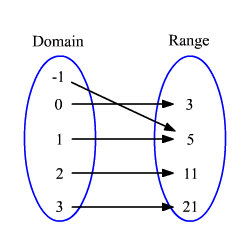How to draw a mind map
Table of Contents
Table of Contents
Have you ever found yourself in a situation where you need to illustrate the relationships between different elements in a system or process? If so, you may benefit from learning how to draw a mapping diagram. Mapping diagrams are visual representations that depict the connections and dependencies between different components of a complex system or process. In this article, we will discuss the key steps involved in creating a mapping diagram and provide some tips and insights to help you get started.
Whether you are a student, a professional, or just someone interested in learning a new skill, you may have encountered challenges when it comes to creating mapping diagrams. Perhaps you struggle to identify the key components of a system, or find it hard to represent these components in a way that is both clear and meaningful. Maybe you find it difficult to choose the right tools or techniques for the job, or feel overwhelmed by the amount of information that needs to be organized and presented. Whatever your pain points may be, the good news is that drawing a mapping diagram is a manageable task that can be tackled with the right approach and mindset.
So, how do you draw a mapping diagram? The first step is to define the scope and purpose of your diagram. Consider what you want to achieve with your diagram and what you want your audience to understand. Once you have a clear picture of your goals, you can start to identify the key components of your system and the relationships between them. Then, it’s time to choose the right tools and techniques for the job. You may want to use software programs or online resources that can help you create maps and diagrams, or you may prefer to draw your map by hand.
In summary, drawing a mapping diagram involves several key steps, including defining the scope and purpose of your diagram, identifying the key components of your system, and choosing the right tools and techniques. By following a structured approach and maintaining a clear focus on your goals and audience, you can create effective and meaningful mapping diagrams that can enhance your understanding of complex systems and processes.
How to draw a mapping diagram: A personal experience
As someone who has had to create mapping diagrams for various projects and assignments, I have found that the most important step in the process is to clearly define the scope and purpose of the map. Once I have a clear understanding of what I want to achieve with my diagram, it becomes much easier to identify and represent the key components of the system. I also find it helpful to use colors, symbols, and other visual cues to create a clear and engaging diagram that can be easily understood by my audience.
Tips and tricks for creating effective mapping diagrams
When it comes to drawing mapping diagrams, there are several tips and tricks that can help you create clear and effective diagrams. For example, you may want to use different shapes or symbols to represent different components of the system, or use arrows or other visual cues to indicate the direction of dependencies or relationships. You may also want to experiment with different layouts or organizational structures to find the one that works best for your particular project or assignment. Additionally, it can be helpful to solicit feedback from others on your diagram, as this can help you identify areas for improvement and refine your approach over time.
Mapping diagram tools and resources
If you are looking for tools and resources to help you create mapping diagrams, there are several options available. Online resources like MindMeister and Canva offer easy-to-use mapping and diagramming tools that can help you create professional-looking maps in a matter of minutes. Similarly, software programs like Microsoft Visio and Lucidchart offer more advanced mapping and diagramming features that can be customized to meet a wide range of needs and requirements.
Benefits of using mapping diagrams
There are several benefits to using mapping diagrams, including their ability to help you organize complex information and identify patterns and relationships that might be difficult to discern otherwise. By creating a visual representation of a system or process, you can gain a deeper understanding of its underlying structure and identify areas for improvement or optimization. Additionally, mapping diagrams can be used to communicate complex ideas or concepts in a clear and engaging way, making them a valuable tool for presentations, reports, and other types of communication.
Putting it all together: Conclusion of how to draw a mapping diagram
Learning how to draw a mapping diagram is a valuable skill that can help you organize complex information in a clear and compelling way. By following a structured approach that includes defining the scope and purpose of your diagram, identifying the key components of your system, and choosing the right tools and techniques, you can create effective and meaningful mapping diagrams that can enhance your understanding of complex systems and processes. With the right mindset and approach, anyone can learn how to draw a mapping diagram and use it to achieve their goals and objectives.
Question and Answer
Q: What are some common mistakes to avoid when drawing a mapping diagram?
A: Some common mistakes to avoid when drawing a mapping diagram include overcomplicating the diagram with too much detail, using unclear or inconsistent labeling, failing to align symbols or shapes, and neglecting to test the diagram for usability and clarity.
Q: How can I choose the right tools and techniques for creating a mapping diagram?
A: When choosing tools and techniques for creating a mapping diagram, it is important to consider your goals and objectives, your audience, and your own skills and preferences. You may want to experiment with different software programs or online resources to find the one that best fits your needs, or you may prefer to create your map by hand.
Q: How can I make my mapping diagram more engaging and visually appealing?
A: You can make your mapping diagram more engaging and visually appealing by using different colors, symbols, and visual cues to represent different components of the system. You may also want to experiment with different layouts, organizational structures, and font styles to create a diagram that is both clear and engaging. Finally, don’t forget to solicit feedback from others on your diagram, as this can help you identify areas for improvement and refine your approach over time.
Q: How can I use mapping diagrams in my work or studies?
A: Mapping diagrams can be used in a variety of contexts to help organize complex information and communicate ideas effectively. For example, you might use a mapping diagram to illustrate the different stages of a project, map out the dependencies between different components of a system, or identify correlations between different data points. Regardless of the specific use case, mapping diagrams can be a valuable tool for enhancing your understanding of complex systems and communicating your ideas to others.
Gallery
Mapping Diagram Function | What Is A Mapping Diagram? - Video & Lesson

Photo Credit by: bing.com / mapping draw study diagrams
Mapping Diagram Function | What Is A Mapping Diagram? - Video & Lesson

Photo Credit by: bing.com / mapping diagrams draw example lesson use diagram waitress study
Domain Co-domain And Range Of Function | How To Find Domain, Range

Photo Credit by: bing.com / mapping domain range function diagrams diagram examples find draw arrow solution does
How To Draw A Mind Map?

Photo Credit by: bing.com /
Mapping Diagram Function | What Is A Mapping Diagram? - Video & Lesson

Photo Credit by: bing.com / mapping diagrams draw diagram use function study





